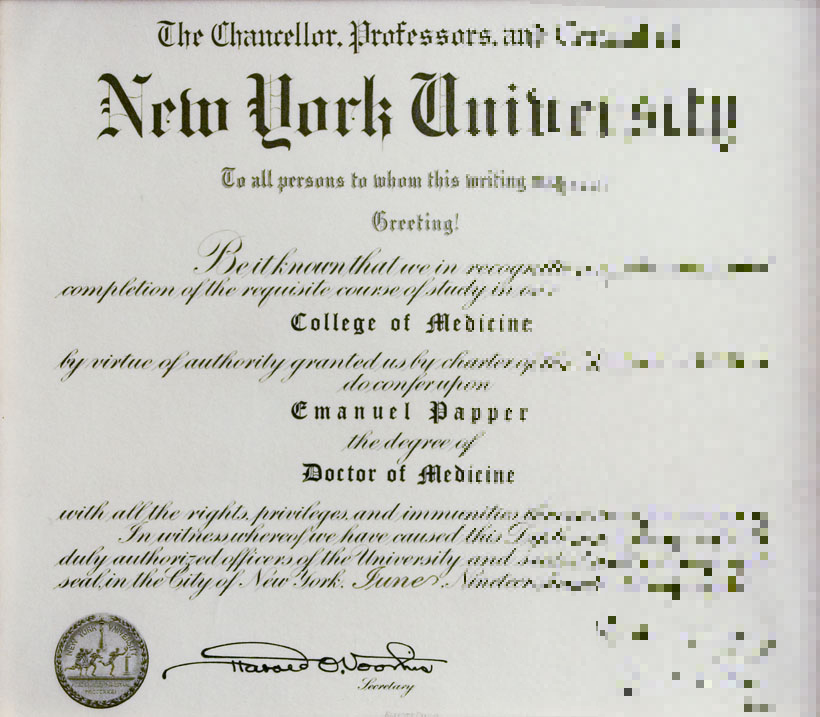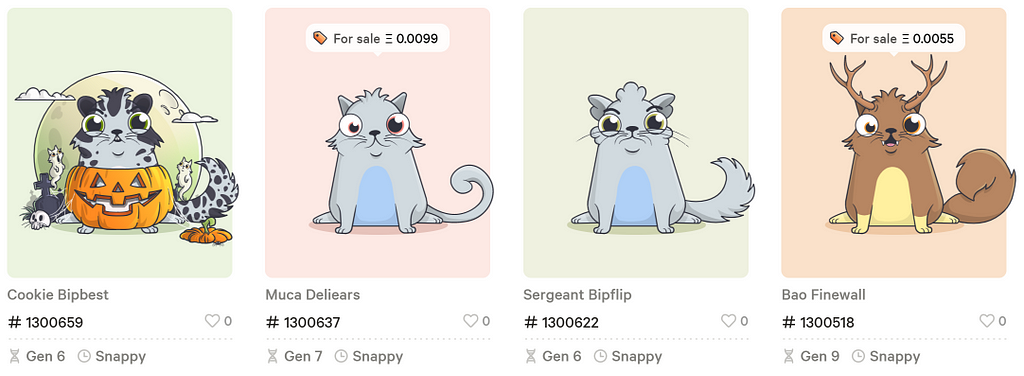Latest news about Bitcoin and all cryptocurrencies. Your daily crypto news habit.
CryptoKitties brought non-fungible tokens to the world, and that could have huge applications in healthcare.
A little over a year ago CryptoKitties launched and quickly became the most successful non-financial DApp. Borrowing from their own description, CryptoKitties allows you to collect and breed digital cats like these:
These are collectable digital cats which are born and live on the Ethereum blockchain. Each of these is unique digital goods, they are collectible and non-fungible in the same way that baseball cards are. Moreover, they are each programmed to have attributes specific to them (like the antlers the fellow on the right has). Lastly, every Kitty exists as an ownable and scarce digital asset on a blockchain.
While these are certainly cute, there is something much more profound underlying CryptoKitties. They show the potential for ownable and programmable digital assets. The technical term for these are non-fungible tokens or NFTs. Let’s unpack what that means.
Digitally ownable
An amazing fact of modern information technology is the ability to effortlessly and instantly duplicate information. You can intuit this by comparing mail to email. If I write you a letter and send it to you that letter is gone from my possession. Likewise, if you forwarded it on to someone else, it would have left your possession and entered someone else’s. There will only ever be one copy of that particular letter.
In contrast, if I sent you an email, a copy of that email remains on my computer. Moreover, you can instantly forward that email to thousands, even millions of people, with almost no effort. While this property is great for some things, it is terrible for scarcity. Having your email to mum forwarded to the extended family is fine, but a business having its services or a nation having its money duplicated is a disaster.
This was one of the problems that blockchains solved. There are many descriptions of blockchains online, and I won’t dive into the details here, but essentially blockchains enable computing where information cannot be duplicated. To borrow from the email example again, if I had sent you an email on a blockchain, that email would be provably gone from my possession. Moreover, you won’t be able to effortlessly duplicate and forward that email on, there will only ever be one copy owned by one person. Blockchains introduce scarcity to the digital world.
Further to that point, if we want to use a system we read its code to audit the rules around asset issuance. In other words, we can verify that it works as advertised and doesn’t give any party (undisclosed) outsized influence or the ability to give themselves an NFT they haven’t paid for.
Lastly, blockchains provide a strong guarantee of the goods built on top of them. Only the owner of an asset can use it, sell it, or send it to someone else. I own a few NFTs myself that I don’t plan on touching, and as long as the Ethereum blockchain lives, I will always own those NFTs. No one can change that.
The sum of these qualities is that blockchains enable digital ownership of goods in a way that wasn’t possible before.
Programmable From The CryptoKitties Genome Project: On Dominance, Inheritance and Mutation
From The CryptoKitties Genome Project: On Dominance, Inheritance and Mutation
CryptoKitties, like physical kitties, have their own DNA. They even have their own genome project. Each cat is programmed to have a set of attributes associated with it in the form of 48 different inputs, or genes. In the above instance each four characters dictates a particular attribute of a kitty, the fourth batch of characters denotes the type of a mouth a kitty has, the 5th batch what type of hair they have, and so on.
These are just the attributes that the creators of CryptoKitties arbitrarily decided upon. A NFT can be programmed to have any attribute you want. Instead of the above cattributes, you could program…
- The details of a CME you just earned
- An institution you’ve received a degree from
- The ICD-10 code for a diagnosis
- A physician or patient ID
- A health policy ID
- Any description you’d like
There’s a second way that non-fungible tokens are programmable as well: you can write code that interacts with them. Here are some examples:
- Use the Set Protocol to bundle together a number of NFTs (bundled payments, anyone?)
- Program an NFT to expire
- Limit which actors the NFT could be sent too
- Use a smart contract to automatically send someone payment upon retrieval of a pre-specified NFT
- Build something on top of an NFT, similar to how KittyHats builds on top CryptoKitties.
What does this have to do with healthcare?
CryptoKitties are a great demonstration of non-fungible tokens. They demonstrate how digital assets can be ownable and programmed, and this core innovation has applications vastly beyond digital cats.
As healthcare becomes increasingly digitised non-fungible tokens could play a major role in this transition, allowing for the goods and services of today to be rendered in a digital form. A few use cases could be…
- Providers could represent healthcare service offerings as non-fungible tokens. Attributes could be the service description, provider, cost, redemption expiration date, etc.
- Every healthcare professional could carry with them their credentials as non-fungible tokens in their wallet. Credentials could be issued by the relevant educational or professional institutions, and re-issued / verified every time someone is credentialed.
- Healthcare related content licenses could be represented as non-fungible tokens, with all the details of a contract programmed into the actual asset, and a smart contract automatically generating it.
- Similar to the above, intellectual property could be represented as a non-fungible token and licensed in the same way.
Any digital good or service of value can be represented as a non-fungible token. I suspect that use cases where the identity of the participant is critical will be the best early applications of NFTs.
Looking forward
I’m also excited about the prospect of using non-fungible tokens to create coherent and transparent markets where there are none today. Every transaction on a (public) blockchain is recorded on a single digital ledger that anyone can access. Bringing this level of transparency to healthcare services would give unprecedented and much needed insight to consumers, allow us to better track healthcare value, and let the best providers shine. Separate to the benefits of transparency, decentralized exchange protocols can be leveraged to instantly spin up markets to buy and sell these services.
Lastly, I’m excited by the prospect of replicating the “composability” of decentralized finance within healthcare, and capitalizing on the compounding gains that have come from decentralized finance’s pieces being interoperable and programmable. Using non-fungible tokens for healthcare goods and services would be a large step towards that.
If you liked what you’ve read, I’d really appreciate a follow and round of applause.
You can also follow me here on Medium or on Twitter. Feedback is encouraged!
What CryptoKitties has to do with healthcare was originally published in Hacker Noon on Medium, where people are continuing the conversation by highlighting and responding to this story.
Disclaimer
The views and opinions expressed in this article are solely those of the authors and do not reflect the views of Bitcoin Insider. Every investment and trading move involves risk - this is especially true for cryptocurrencies given their volatility. We strongly advise our readers to conduct their own research when making a decision.

